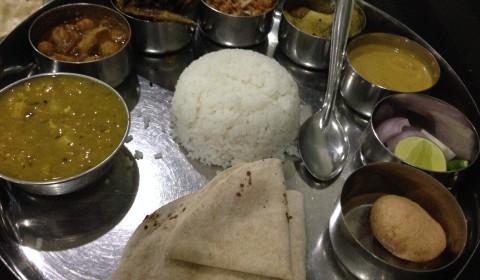In Puri, the British witnessed a spectacle so overwhelming, they decided to coin a term after it.
Juggernaut. A force so strong, it cannot be stopped. It rolls on, undisturbed.
Orissa lies on India’s east coast. It shares its state boundaries with West Bengal, Chattisgarh, Jharkhand, Telangana and Andhra Pradesh. In history books you will find Orissa as Kalinga, made famous by emperor Ashoka. Referred to as Utkal in our national anthem. The region is steeped in history. This is evident on a visit to the Sun temple at Konark (1250 AD) and Puri’s Jagannath Temple (1174 AD). These monuments are revered by the people. The cultural bond reflects in their food as well.
This part of the country is anything but glamorous. Some might even call it backward. The people and everything around them is simple. A typical Oriya meal at Bhubaneshwar confirmed that. I can’t honestly say the food is complicated or complex. Obvious influences from the South and from Bengali cuisine makes this the most complicated yet unglamorous food I have had anywhere during my journey. Simple seafood dishes and milk-based sweets are a speciality here. But what it lacks in glamour, it compensates for with taste. The food here is the closest thing to simple homemade fare. The food tastes like it’s homemade, even at a restaurant! They don’t even have glamorous names, very simply because of the absence of glamorous ingredients. No cream, no dollops of butter and very little oil or spice.

Typical dishes include:
Rice
Papad
Chutney
Vegetable curries
Dalna (dal or gravy)
A simple fish curry/ mutton curry/ chicken curry
A chhena (uncultured cottage cheese)-based sweet such as Chenapoda (a little cake with a distinctly sweet burntness)
Or rasagulla.
Most Indians typically wouldn’t associate these dishes with restaurants. I can’t even find restaurant names or comparisons for them.
When it came down to taste, I have to say, the food didn’t compromise on taste even when it felt underwhelming. Home-style food always tastes better. Food this basic, tasty and healthy is rare in any restaurant.
This is because home-style food is very different from what you get at restaurants. In the latter case, glamour is the star element. With home food, it doesn’t matter, because it tastes natural and is made with care.
This is why it’s no surprise that cooks and chefs from this region are known for their ability to naturally bring out the taste in food, without relying on these “glamorous” factors. The art of cooking is taken very seriously here. It is an essential part of their culture and way of life.
The people here are equally happy. Rich or poor, people seem happy and content with whatever they have. Deeply religious, they wait eagerly every year for one event. This event puts Orissa on the world map. The origins of this event are unknown (for want of my own knowledge, admittedly). A safe assumption would be around a thousand years. At least.
The Jagannath Ratha-yatra takes place during the monsoon every year. It involves three 20+ foot chariots being pulled by devotees from Point A to point B, about 3 kilometres in total. These colossal chariots house the three Gods, Lord Jagannath (an incarnation of lord Vishnu, the “preserver” of the Hindu holy trinity), with his sister Subhadra and brother, Balabhadra. Those who have seen the spectacle look for words to describe it. When the chariots start moving, the chances of unfortunate things happening are very high. Millions of people pull it, willingly risking their lives on its path, making this seem even more awe-inspiring. It’s considered good luck to pull the chariots, for being blessed with good fortune. It takes something more than just courage to risk your life for this. It takes faith of the most genuine kind. Something the people who pull these wood-and-iron Juggernauts have in abundance.
